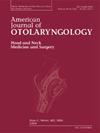ChatGPT作为一种决策支持工具,可以更好地自我监测听力
IF 1.7
4区 医学
Q2 OTORHINOLARYNGOLOGY
引用次数: 0
摘要
大型语言模型聊天机器人(如ChatGPT)的快速发展为医疗保健支持创造了新的可能性。本研究探讨了将听力自我监测(通过移动应用程序)与ChatGPT的决策能力相结合的可行性,以评估是否需要专家咨询。特别是,该研究评估了ChatGPT在长达12个月的时间内做出推荐的准确性是如何变化的。方法在1000个模拟病例的数据集上对schatgpt - 40进行测试,每个病例在长达12个月的时间内包含每月的听力阈值测量。它的建议与5位专家的意见进行了比较,使用了百分比同意和科恩的Kappa。还分析了从5项试验中选择最频繁推荐的多重反应策略。结果gpt与专家判断的一致性较强,一致性得分在0.80 ~ 0.84之间。采用多查询策略时,准确率提高到0.87。在所有5位专家一致同意的情况下,ChatGPT获得了0.99的近乎完美的一致分数。它根据延长的观察期调整了决策标准,似乎考虑到了听力阈值的潜在随机波动。结论schatgpt作为听力监测的决策支持工具具有很大的潜力,能够匹配专家建议并有效适应时间序列数据。现有的听力自测应用缺乏追踪和评估变化的能力;集成ChatGPT可以填补这一空白。虽然ChatGPT并非没有局限性,但它为自我监控提供了一个很有希望的补充。它可以加强决策过程,并可能鼓励患者在需要时寻求临床专业知识。本文章由计算机程序翻译,如有差异,请以英文原文为准。

ChatGPT as a decision-support tool for better self-monitoring of hearing
Background
The rapid development of large language model chatbots, such as ChatGPT, has created new possibilities for healthcare support. This study investigates the feasibility of integrating self-monitoring of hearing (via a mobile app) with ChatGPT's decision-making capabilities to assess whether specialist consultation is required. In particular, the study evaluated how ChatGPT's accuracy to make a recommendation changed over periods of up to 12 months.
Methods
ChatGPT-4o was tested on a dataset of 1000 simulated cases, each containing monthly hearing threshold measurements over periods of up to 12 months. Its recommendations were compared to the opinions of 5 experts using percent agreement and Cohen's Kappa. A multiple-response strategy, selecting the most frequent recommendation from 5 trials, was also analyzed.
Results
ChatGPT aligned strongly with the experts' judgments, with agreement scores ranging from 0.80 to 0.84. Accuracy scores improved to 0.87 when the multiple-query strategy was employed. In those cases where all 5 experts unanimously agreed, ChatGPT achieved a near-perfect agreement score of 0.99. It adapted its decision-making criteria with extended observation periods, seemingly accounting for potential random fluctuations in hearing thresholds.
Conclusions
ChatGPT has significant potential as a decision-support tool for monitoring hearing, able to match expert recommendations and adapting effectively to time-series data. Existing hearing self-testing apps lack capabilities for tracking and evaluating changes over time; integrating ChatGPT could fill this gap. While not without its limitations, ChatGPT offers a promising complement to self-monitoring. It can enhance decision-making processes and potentially encourage patients to seek clinical expertise when needed.
求助全文
通过发布文献求助,成功后即可免费获取论文全文。
去求助
来源期刊

American Journal of Otolaryngology
医学-耳鼻喉科学
CiteScore
4.40
自引率
4.00%
发文量
378
审稿时长
41 days
期刊介绍:
Be fully informed about developments in otology, neurotology, audiology, rhinology, allergy, laryngology, speech science, bronchoesophagology, facial plastic surgery, and head and neck surgery. Featured sections include original contributions, grand rounds, current reviews, case reports and socioeconomics.
 求助内容:
求助内容: 应助结果提醒方式:
应助结果提醒方式:


